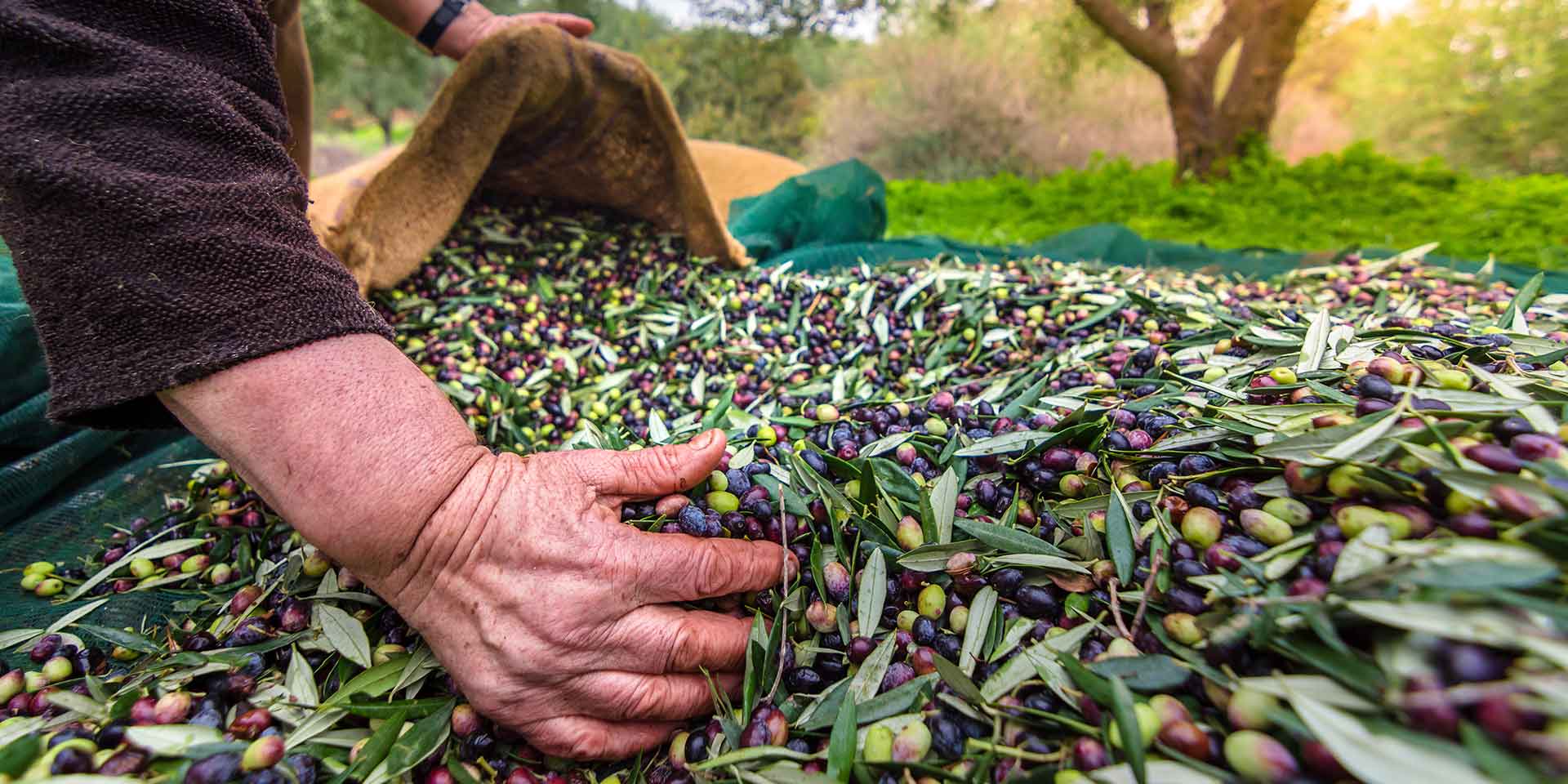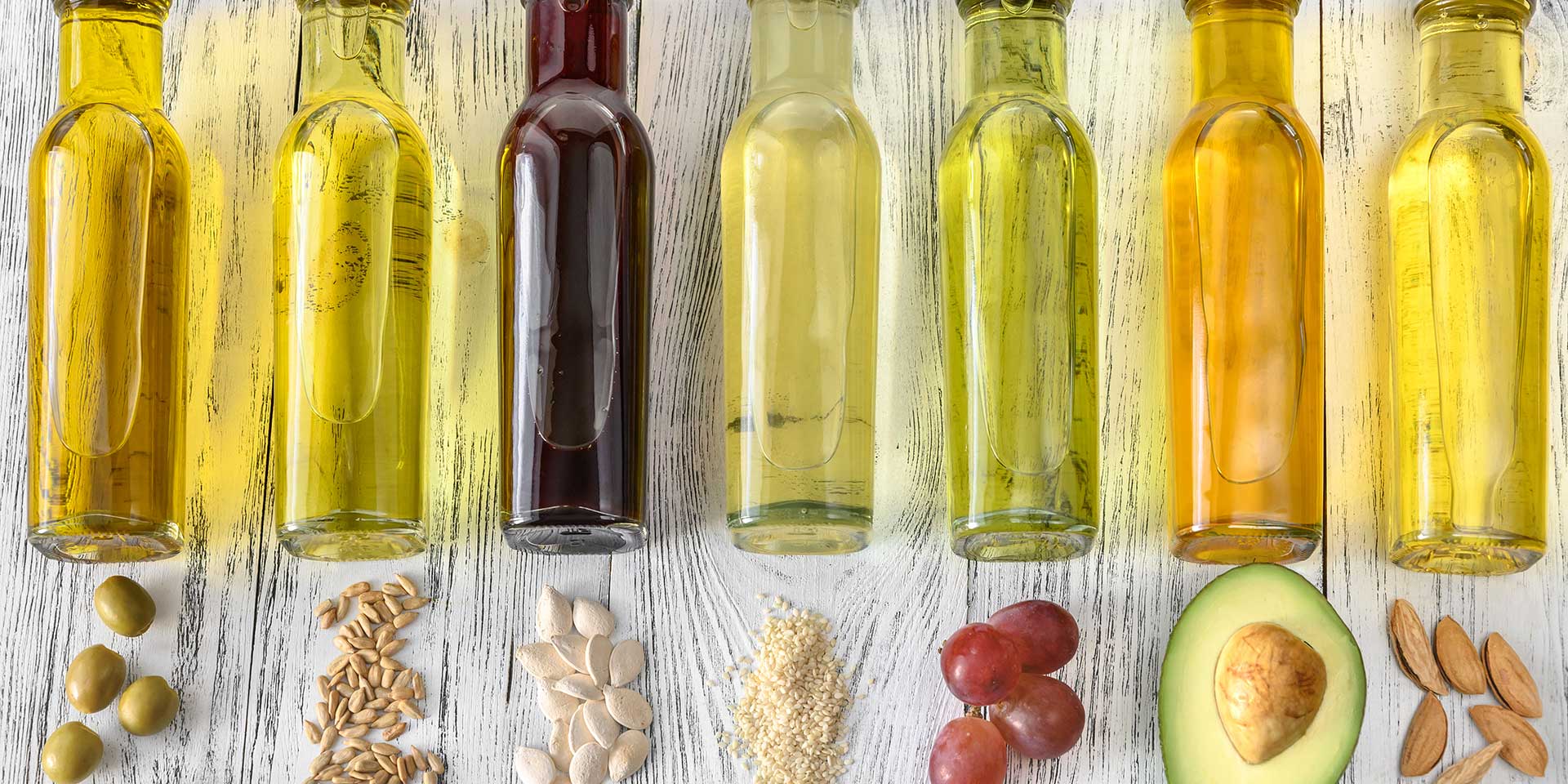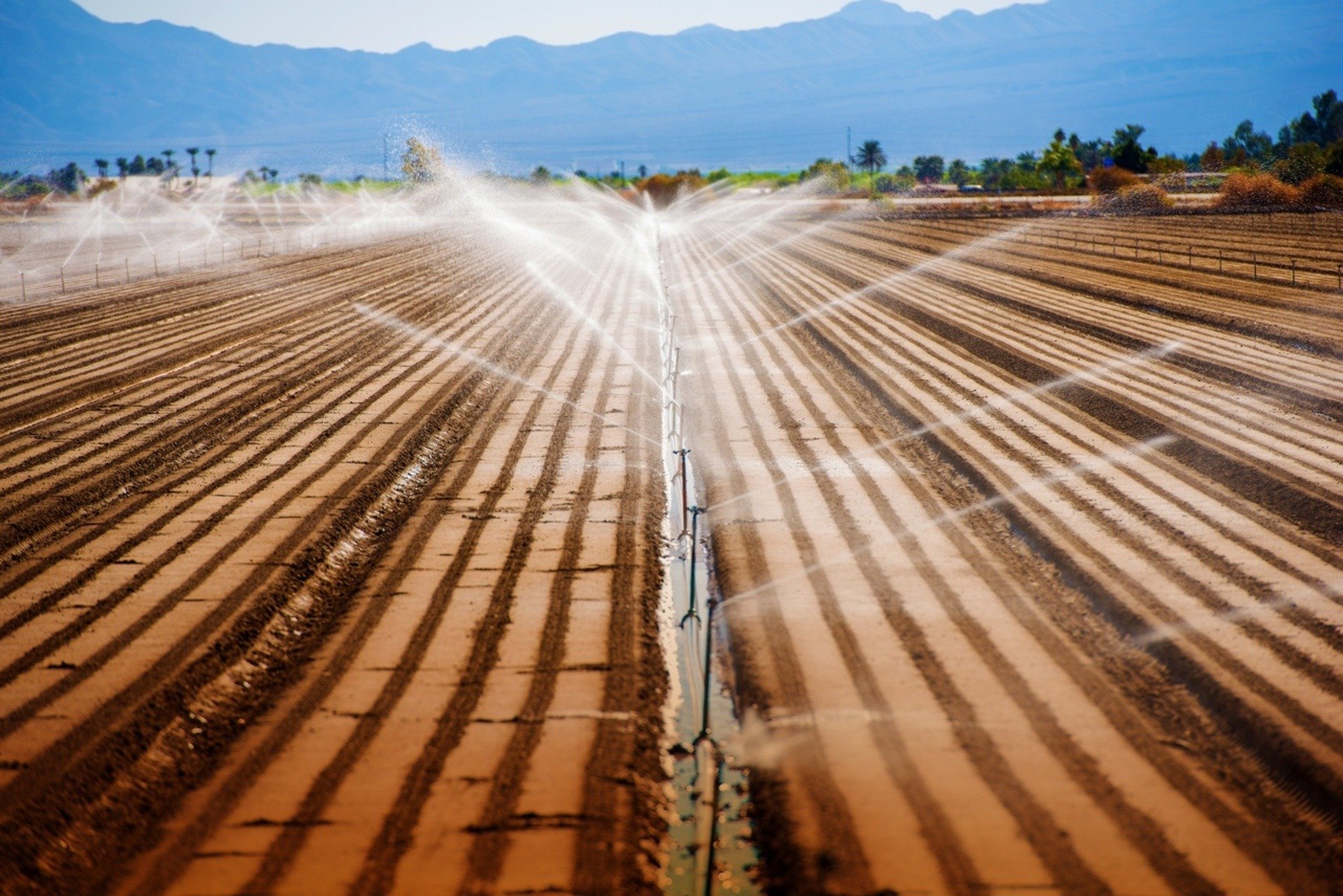Americans love olive oil. Why doesn’t the U.S. produce more of it?
Today, most olives grown in the U.S. will be crushed for oil. But it wasn’t always this way. According to the USDA, around 90 percent of production was for canning between 1980 and 2000.
But since the mid 1990s, demand for olive oil has been on the rise, providing huge opportunities for domestic producers. This change came at a time when consumer understanding of healthy and less unhealthy foods was becoming more sophisticated. Olive oil is high in antioxidants, and studies have shown that there are potential health benefits to replacing fats such as butter with olive oil, such as a lower risk of cardiovascular disease. In the U.S., household penetration of olive oil has increased from around 30 percent five years ago to more than 50 percent today. Still, most of the olive oil sold in the U.S. today is imported from Europe. (Spain is the largest producer globally, but Italy is the chief importer to the U.S.)
As well as being good for our bodies, olives can also be good for the planet. Not only resilient in the face of dry conditions, olive trees also promote biodiversity and ground cover, unlike annual oil crops such as canola and rapeseed, which deplete soil nutrients.
California and beyond
Most American-grown olives are harvested in just one state. “California is a powerhouse in the U.S. olive oil market,” says Paolo Colavita of the Colavita olive oil family, who is now CEO of O Olive Oil and Vinegar. According to the California Olive Oil Council, there are more than 37,000 acres planted in the state to produce extra-virgin olive oil, producing between 2 million and 4 million gallons per harvest. And for oil to be considered “extra-virgin,” it must meet chemical and sensory standards. Labs run chemical analysis tests to determine quality, and trained panelists evaluate an oil’s flavors and aromas.
Dr. Javier Fernandez-Salvador, executive director at the UC Davis Olive Center, explains that there’s a good reason for California’s success with olive cultivation. “There’s basically two things regarding a location that olives don’t like: cold, and excess water in the roots,” he says. “[In California], because of our geographical positioning, our topography, and the proximity to the oceans, it is a lot like the traditional growing regions in the Mediterranean and a great place for growing olives.”
Olive farming in other states is nascent for now, or on a much smaller scale. Fernandez-Salvador notes that certain parts of Arizona that don’t get very cold in winter or too hot in summer could be promising for olives, so long as there is adequate irrigation, but reiterates that very few places have the right conditions to grow high-quality olives at scale.
Meanwhile, in Oregon, there are fewer than 100 acres of cultivation in the state. But at Oregon State University, the Olea Project is conducting research of the best practices for growing olives in Oregon, including a field evaluation to establish which cultivars are the hardiest.
How weather can impact olive trees and their fruit
Olive trees are hardy but have their limits. And as global weather patterns shift, harvests might sometimes be unpredictable. “Anything below freezing can produce a certain degree of damage,” says Fernandez-Salvador. “And it’s not only about the temperature: It depends on how long the olives are exposed to the low temperatures.” When seasonal shifts are erratic, vulnerable fruits are hit hard. For example, a cold snap around bud break can spell trouble for the crop. “When that starts to happen, the new tissue that comes out can be very tender, it’s very delicate,” says Fernandez-Salvador. He adds that investment in frost prevention techniques is not as common or financially suitable for olive oil as it is for other specialty crops like blueberries and grapes.
In Oregon, the Olea Project team is reporting some promising results from the cold hardiness study. After cultivars were planted in 2021, winters were mild for a couple of years, but 2024 was different. “We had consecutive nights of 15 F,” says Neil Bell, retired community horticulturist from the Olea team. He points out that it was unusual for the area that the daytime temperatures didn’t rise above freezing for around four days. Despite this freak cold snap, he was pleasantly surprised by the range of cultivars that escaped without significant damage. In fact, yield improved dramatically that same year. “We went from harvesting 30 percent of the plants in 2023 to harvesting 60 percent of the plants in 2024,” Bell says. Texan crops, on the other hand, were not so lucky. The state’s growers have had several hard years contending with freezes, leading to unproductive trees.
On the other end of the spectrum, the extremes of hot winter weather can also cause issues. In 2023, unprecedentedly hot and dry weather in the Mediterranean basin damaged some olive groves at key moments as they began to blossom, leading to disappointing yields.
How do olive varieties differ?
One Spanish olive variety, Arbequina, has proved more popular with California’s growers than any other. Fernandez-Salvador describes it as “a workhorse.” “It can tolerate some cold,” he says. “There’s a few other varieties that are much more sensitive.” Different olive varieties have different flavor profiles, and Arbequina’s is mild compared with that of some other varieties, thanks to lower levels of polyphenols (compounds found in plant foods that are responsible for flavor as well as health benefits). This too has proven to be an advantage, as the subtlety of the oils produced by Arbequina are favored by most American palates. But overreliance on any one variety could turn out to be a negative. “Having diversity in your orchard is a good practice, because you might have other varieties that might be a little bit more tolerant to that cold event,” says Fernandez-Salvador.
In the San Joaquin Valley, Enzo Olive Oil, a fourth-generation family farm, is currently growing Arbequina, Arbosana and Koroneiki varietals. “Each variety helps the other for cross-pollination during bloom, so you want to have a nice balanced mix,” says Vincent Ricchiuti, COO and co-founder. Plus, he says, the flavor profile changes each year with every harvest. “Similar to how a wine’s profile changes year to year based on growing conditions,” he says. “In a typical year our Arbequina is our delicate, our Arbosana is our medium, and our Koroneiki is our bold.”
Capay Valley Ranches — located in the eastern foothills of the Coast Range, between the Napa and Sacramento valleys — also grow these three olive varieties, among others. They describe Arbequina as medium-bodied with floral undertones, Arbosana as robust and nutty, and Koroneiki as full-bodied with a peppery finish. O Olive Oil and Vinegar are among their clients. Paolo Colavita feels strongly that using varieties that offer more intense and complex oils than Arbequina can benefit the flavor profile. “These require more meticulous cultivation, with orchards yielding less than Arbequina trees, a challenge we embrace at O to ensure quality,” says Colavita.
Changes in tree density and cultivation
As well as considering which varieties to grow, olive farmers must also decide which size tree to plant. In past decades, farmers traditionally used medium-density olive trees; today, many are opting for super high-density plantings. These trees are fully productive within a shorter time period (typically within four or five years) but may need replanting after 15 years. In these thickly populated orchards, there might be around 4 feet between trees, and 12 feet between rows. Super high-density orchards have production efficiency benefits, but could have limitations in areas with scarce water resources.
Only certain varieties are suitable for these super high-density orchards, and Ricchiuti says that suitability for this played heavily into his decision about which varieties to grow. “This method of growing the trees is better for irrigation, labor and harvesting,” he says. Particularly in regions where labor for harvests is costly or scarce, a super high-density olive grove offers the benefit of mechanized pruning and harvesting, though Fernandez-Salvador points out that in a high-density orchard, excessive shading can sometimes hamper productivity.
Compared with other tree crops, olives have a very small water footprint. Traditionally spaced orchards, which have few trees per acre — grown mainly in Spain, Italy and elsewhere in the Mediterranean — can rely solely on rain. But only a very small number of Californian orchards use this system. “Modern growing systems, medium- and super high-density are irrigated with supplementary water during the dry months,” says Fernandez-Salvador, noting that drip irrigation is the most efficient in super high-density orchards. As water-efficient as olives are, pinning down an exact amount of water that a tree needs is a trickier matter. “It depends on the soil type, the region, the variety, the production system, the irrigation system used, the climate, the density of planting [and] the irrigation use philosophy of the grower,” Fernandez-Salvador says.
Farmers must consider both quality and quantity, as well as any certification they wish to obtain for their product, such as organic certification. Sales of organic olive oil are increasing in the U.S., as part of broader demand for certified organic products overall. “It takes three years to convert a conventional grove … to organic,” says Paul Ryzanych, director of sales and marketing at O Olive Oil and Vinegar. “For those three years you have to grow the olives in the organic manner.”
As olive growers and olive oil producers continue to work hard to meet such consumer wants, they’ll continue to contend with extreme temperatures — both highs and lows — which are the result of climate change. And while olives are hardy, they can only take so much — leaving the future uncertain.
Get the latest food news from FoodPrint.
By subscribing to communications from FoodPrint, you are agreeing to receive emails from us. We promise not to email you too often or sell your information.
Top photo by Bob McClenahan.
More Reading
15+ ideas for delicious meatless grilling
July 1, 2025
4 Tips for Stretching Your Food Dollars
April 16, 2025
How to use extra onions
April 9, 2025
Our latest podcast episode on pistachios: The making of a food trend
April 1, 2025
This vegan tiramisu will bring you joy
March 11, 2025
For lessons in thrifty, climate-friendly cooking, look to vintage cookbooks
March 10, 2025
How to fight household food waste? Join our Eat Down Your Pantry Challenge!
February 13, 2025
During a period of egg chaos, egg replacements for (almost) any situation
February 7, 2025
Ways to go meatless — or less-meat — in January
January 15, 2025



